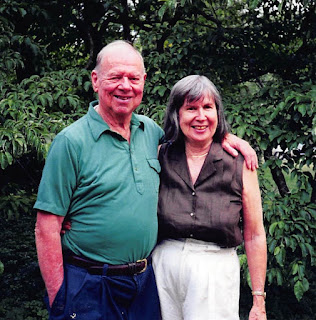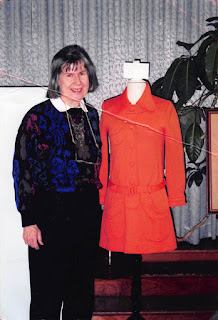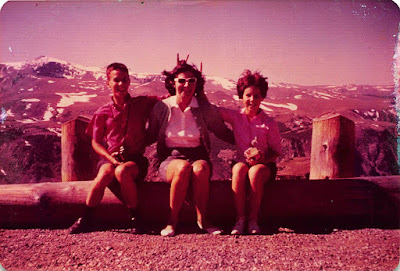 |
| Marilyn and David Araiza, Vernal Pools and Grassland Reserve, 2013 |
The
University of California prides itself on conducting research on an
international scale. That said, when I arrived at UC Merced in 2013, the new,
small campus had only two other ecologists and very few earth scientists. There
were very few high-tech instruments on campus, even in physics and chemistry.
While UC Merced lacked the accoutrements I was accustomed to at the Geophysical
Laboratory, it was a very upbeat environment and was improving its
infrastructure fast. I built my first
isotope lab there in a building that struggled with environmental controls, but
we managed to make things work. While pursuing my interests in compound
specific isotope analyses of amino acids from various experiments and
organisms, the majority of my colleagues were interested in various aspects of
soil ecology and biogeochemistry. Adjacent to the campus is the Merced Vernal
Pools and Grassland Reserve, a 6,500 acre preserve created in 2013 and
available to UC students and faculty for study. My husband served as Director
of the Reserve, so we took advantage of his access and its proximity to
introduce the students and faculty on campus to stable isotope biogeochemistry.
 |
| Reflections in a vernal pool |
Vernal
pools are shallow, seasonal wetlands that fill in from late winter to early
spring rains on the flanks of the foothills of the Sierras. An impervious layer of
sediment located about 1 meter below the surface keeps rainwater from seeping
into the ground, thus creating these surface pools. This unique landscape has
been decimated by development in California, therefore, it was important when
UC Merced built its campus that they avoided plowing over these threatened
habitats. Wisely, many acres of vernal pools and grasslands just adjacent to
the campus were preserved in 2003 when the campus footprint was established.
Eastern
Merced County grasslands contain the most diverse and abundant vernal pools of
any region in California. The UC Merced Reserve vernal pools support many
federally-listed endangered plants and aquatic invertebrates (for example,
fairy shrimp and tadpole shrimp), and one federally threatened amphibian. The
federally endangered San Joaquin Kit Fox (Vulpes
macrotis mutica) has been observed in the local area, but has not yet been
documented in the Reserve (Toews and Swarth, 2016). The UC Merced Reserve is an
outstanding, unique ecosystem and its designation in 2014 by the UC Regents
into the UC Natural Reserve System.
As across
much of California over the past 200 years, the grasslands of eastern Merced
County have undergone a large-scale replacement of native perennial grasses by
a number of European annual grass species. The vast majority of grass species
that now cover the Reserve are not native to western North America and includes
such species as bromes, wild barley, Italian ryegrass, wild oats (Avena spp.),
and annual fescues. Native, annual herbs in the area include the early blooming
goldfields, tidytips, Johnny tuck, Frying pan poppy, popcornflowers, Douglas’ meadowfoam,
California brodiaea, bluedicks, and clovers.
These native plants, however, make up a very small portion of the total vegetation.
Cattle
grazing takes place mainly during the time of year when these non-native
grasses and forbs are growing. Although it might seem contrary to saving native
plants, cattle grazing helps maintain the ecological health of the vernal pools
by limiting the spread of non-native, European grasses and forbs into and
around the vernal pools. The growth of exotic plants into the vernal pools
leads to high rates of evapotranspiration, which dries the soil and reduces the
number of days that pools are inundated (i.e. hydroperiod). Adequate grazing also prevents the living and
dead undecomposed plant matter (phytomass or “thatch”) from accumulating in
pools. Excessive thatch can lead to degradation and eutrophication of the
aquatic environment.
 |
| Dairy cows grazing on the Reserve |
At the UC
Merced Reserve, dairy cows were chosen for grazing. While they are “nice to
look at” with their black and white hides, dairy cows are a pain in the neck to
work with. They trampled cameras that were deployed in the field, ate plastic
pieces off of vehicles, scratched bumpers and fenders, and in general were
nosey. Although cattle grazing is considered to be acceptable and necessary for
the Reserve, prudent environmental stewardship requires monitoring in order to
avoid over-grazing and under-grazing. To accomplish this essential land
stewardship, we monitored residual dry matter (RDM) in 2013, 2014, and 2015. This measurement told us whether the land was being effectively grazed or over-grazed.
After 35 years
of having mass spectrometers at my beck and call, during my first 15 months at
UC Merced I did not have any isotope instruments. With students David Araiza
and Bobby Nakamoto, Chris and I started making RDM measurements using scissors,
PVC pipes, sample bags, and a simple balance so that we could start collecting
data and figuring out how plants were responding to cattle grazing in the face
of a major drought in 2013-2015.
 |
| RDM "tool kit" |
We followed
standard protocols for RDM sample collection procedures. Sampling sites were selected
that represented typical areas where cattle grazed and that spanned the length
and width of the Reserve. We traveled by 4WD vehicle to random sampling areas
in 2013 and 2014, and to pre-selected sampling sites along transect lines in
2015. We entered the Reserve in the early morning and typically collected
samples until about 12:00 pm. At a sampling site, three 1 ft2 PVC quadrats
were deployed by randomly throwing each one in a different ordinal direction
roughly 10 to 15 m apart from one another. After the quadrat was placed on the
ground, we did not change its position even if it landed on bare earth. The
only time we re-positioned the quadrat was if it landed on a cow patty.
We found
that grazing was uneven across the Reserve as revealed by our sample collection
data and data mapping. Uneven grazing is to be expected, but it could mean that
some vernal pools are not benefiting from grazing. While uniform grazing is
probably not achievable, more attention to cattle dispersion and stocking
rates, and regular communication between the grazer and the Reserve director
could lead to improvements. If the University
switched to grazing beef cattle, uneven grazing could be significantly reduced.
Over the three years cattle removed an average of at least 44%, and up to
possibly 79%, of the available, annual forage on the Reserve based on
calculations of collected RDM.
I learned
how to make my time without instrumentation a valuable learning experience.
Undergrads accompanied us on RDM sampling days, and we had fun times being in
the open air, seeing coyotes, burrowing owls, and eagles appear magically on
this vast landscape. When the mass spectrometers arrived, I used the Vernal
Pools reserve as a teaching site for students to learn how to conduct field work
and understand complex isotope patterns on a landscape.
 |
| The grasslands on the Reserve |
Several of
my colleagues at UCM, Asmeret Berhe, Stephen Hart, and Teamrat Ghezzehei, were interested
in various aspects of soil isotope biogeochemistry. As the director of the
isotope facility, I became involved in many of their studies. At first glance,
the work did not fully capture my interest, particularly after studying exotic
meteorites and amino acids from owls. California is almost exclusively a C3-plant
based ecosystem, so the carbon isotope pattern in soils has a rather small
range and matches closely the carbon isotope signals in plants growing on those
soils. Soils are one of the major reservoirs of fixed carbon in terrestrial
environments. How this carbon is cycled can be important for climate
perturbations. Asmeret Berhe and her students are interested in how erosion
affects whether a soil holds onto its organic carbon or whether it is released
back into the atmosphere as carbon dioxide after the soil moves. This is not an easy question to
answer because soil has a complex structure with different parts of soil
holding different amounts of organic carbon.
Berhe and
her students developed methods for separating bulk soils into density
fractions, which added to the quantitative assessment of how carbon, nitrogen,
and even hydrogen is cycled in soils. With carbon isotope measurements, percent
total organic carbon, percent total nitrogen, as well as the mass balance of
the density fractions, the research became more engaging (e.g., McCorkle
et al., 2016; Abney et al., 2017). Together with radiocarbon data
to measure the age of the organic carbon in soils, we were able to determine
relative reactivities of these different soil fractions.
Postdoctoral
researcher Elizabeth (Liz) Williams pioneered work on hydrogen isotopes in soils
based on the work by Ruppenthal et al. (2015). One of the major
questions in soil ecology today is whether the organic matter in soil comes
from root exudates, litter deposition from the surface, microbial biomass, or a
combination of these three sources. Ruppenthal took advantage of the difference
in the hydrogen isotopes of leaf water (more positive) relative to those of
water in root tissue. He argued that if decomposed leaf litter were the source
of soil organic matter, then its isotope composition would be more positive
than if it came from root exudates. His conclusion was that soil organic matter
in his study site, a grassland ecosystem, was derived primarily from root
exudates.
Liz
Williams set up a series of experiments using soils from an altitudinal
gradient in the nearby Sierra Nevada mountains.
The hydrogen isotope signatures of bulk soil and the heavy, mineral fraction
were related to local precipitation. It remains to be seen whether the hydrogen
isotopes of deeper soils will carry a palaeoenvironmental signal. Williams’
approach might provide an independent and more holistic assessment than current
strategies based on lipid compounds extracted from soils.








